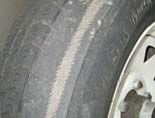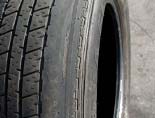Some Tips On Inspecting a Classic car
Make up your mind First. Not just the make or model of car- you may not really mind- but what you want to get out of a car. Do you want something that arrives on a trailer and will need years of loving restoration before it can be driven? Or do you want something shiny, fun and reliable that you can drive in the summer. Ford Mustang
Carry out Some Research. You just can’t do enough of this. Find out what car you want, and try to find out as much as you can about it. I have bought cars on gut reaction before, but the consequences have usually been painful and expensive. The big classic car for sale websites all have easy search facilities which mean you can quickly judge prices.
Most marque websites are free to join and an absolute gold mine of information, much of which can be useful to the prospective buyer. Compare a number of cars, and if possible go to see a few (and don’t buy the first one you look at!). Ask current owners about their experiences with the car.
Get it Inspected Prior to Purchase. You would expect us to say this, but it is absolutely necessary. Even if it is just a friend who used to own a similar car get someone with some experience to go and have a preliminary look. If you are still interested then get an expert.
Carrying Out your own inspection
Find out where your type of car is prone to failure or rot. Every car will have weak points, and a search of some motoring forum will often identify some of these points.
Be Methodical.
Make a list before you attend, to ensure you cover everything.Take a Long Look First. Stand back from the car, and look at it. Does it droop or sag on one side? How are the panel and door gaps? Are there lumpy areas on the paintwork? Try to view a car outside on a dry day if possible—flaws tend to show easier.
Take Look Everywhere!!
Take some overalls, a kneeling pad, a torch and a magnet at the very least. Look under carpets and in the spare wheel well, and under the wheel arches. Feel the width of metal where possible- this is often a great way to find filler.
Concentrate on the Important Things.
These will vary according to the car, but in general the two areas which will cost you most to restore are the bodywork and engine. Also, certain items may be very hard to find or expensive to buy, especially bumpers and small external trim parts which are prone to damage. Also, work out what you think is important and try to see beyond the shiny!
Look for Positive Signsood.
A nicely maintained car usually marks out an owner who looks after their pride and joy. Are the oil and air filters clean or dirty? Do the grease nipples show signs of being used? Talk to the owner if possible- ask him how often he has the car serviced and what lubricants he uses. Finally, check the tyres- old, cracked or mismatched tyres show someone who doesn’t look after their car.
Inspect the Paperwork.
Have a good look through what is available, especially old NCT certs and If they are not there, find out why. This can be very useful, can identify potential faults, and show if the car has been off the road.
Even if it is not us, get someone who knows your type of car to go with you.
![]()



